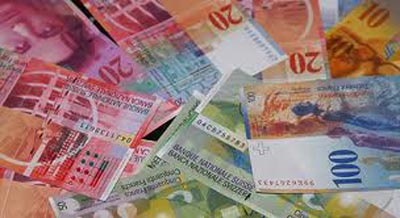Thursday, 26 March 2015 20:32
 LONDON: The dollar sank to a five-week low against the yen on Thursday, hit by the combination of another round of weaker-than-expected U.S. data and a bid for traditional safe havens by investors worried about stock markets and Gulf oil supplies.
LONDON: The dollar sank to a five-week low against the yen on Thursday, hit by the combination of another round of weaker-than-expected U.S. data and a bid for traditional safe havens by investors worried about stock markets and Gulf oil supplies.
News that Saudi Arabia and its allies in the Middle East had launched air strikes against Iran-allied forces in Yemen, which sits on a key shipping passage between Europe and the Arab Gulf, dampened risk sentiment and led to a surge in oil prices.
That offered some support to the foreign exchange world’s traditional safe bets — the Japanese yen and the Swiss franc. The dollar sank as low as 118.33 yen, its weakest since Feb. 20, before recovering a little to 118.73, still down 0.6 percent on the day. Against the Swiss franc, the greenback also hit a one-month low of 0.9491 francs.
“One of the things that negative interest rate policy has done is really force investors into having higher risk positions than they may feel comfortable with,” said Simon Derrick, head of currency research at Bank of New York Mellon in London.
“So we’re in a market that is more sensitive than it has been for a long time to adverse events.”
But the dollar was also 0.3 percent lower against the euro, extending a poor run that has seen it lose around 5 percent against the single currency in two volatile weeks. It traded at $ 1.1015 per euro, just above a three-week low.
The greenback’s slide has raised the first doubts among major banks over its long march higher since the middle of last year. But even analysts who have been most vocal in suggesting the rally may be slowing are not yet ready to call it over.
“We have been talking about it being the beginning of the end and that’s still the way I would characterise it,” said Daragh Maher, currency strategist with HSBC in London.
“It would be a brave man who said we’d seen the bottom for the euro. What this squeeze will have done, however, is raised some doubts in people’s minds that the bull run is not without end.”
Data showed spending on U.S. durable goods fell for a sixth straight month in February, fresh evidence that economic growth slowed sharply early in the year, in part due to bad weather.
That came on the heels of last week’s dovish steer from the U.S. Federal Reserve, which is now seen as likely to hike interest rates later rather than sooner.
The dollar was 0.5 percent lower against a basket of major currencies on Thursday at 96.527, having lost around 4 percent since hitting a 12-year high earlier in the month.
Copyright Reuters, 2015


























